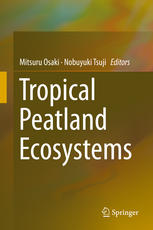

Most ebook files are in PDF format, so you can easily read them using various software such as Foxit Reader or directly on the Google Chrome browser.
Some ebook files are released by publishers in other formats such as .awz, .mobi, .epub, .fb2, etc. You may need to install specific software to read these formats on mobile/PC, such as Calibre.
Please read the tutorial at this link: https://ebookbell.com/faq
We offer FREE conversion to the popular formats you request; however, this may take some time. Therefore, right after payment, please email us, and we will try to provide the service as quickly as possible.
For some exceptional file formats or broken links (if any), please refrain from opening any disputes. Instead, email us first, and we will try to assist within a maximum of 6 hours.
EbookBell Team

0.0
0 reviewsThis book is an excellent resource for scientists, political decision makers, and students interested in the impact of peatlands on climate change and ecosystem function, containing a plethora of recent research results such as monitoring-sensing-modeling for carbon–water flux/storage, biodiversity and peatland management in tropical regions. It is estimated that more than 23 million hectares (62 %) of the total global tropical peatland area are located in Southeast Asia, in lowland or coastal areas of East Sumatra, Kalimantan, West Papua, Papua New Guinea, Brunei, Peninsular Malaysia, Sabah, Sarawak and Southeast Thailand. Tropical peatland has a vital carbon–water storage function and is host to a huge diversity of plant and animal species. Peatland ecosystems are extremely vulnerable to climate change and the impacts of human activities such as logging, drainage and conversion to agricultural land. In Southeast Asia, severe episodic droughts associated with the El Niño-Southern Oscillation, in combination with over-drainage, forest degradation, and land-use changes, have caused widespread peatland fires and microbial peat oxidation. Indonesia's 20 Mha peatland area is estimated to include about 45–55 GtC of carbon stocks. As a result of land use and development, Indonesia is the third largest emitter of greenhouse gases (2–3 Gtons carbon dioxide equivalent per year), 80 % of which is due to deforestation and peatland loss. Thus, tropical peatlands are key ecosystems in terms of the carbon–water cycle and climate change.